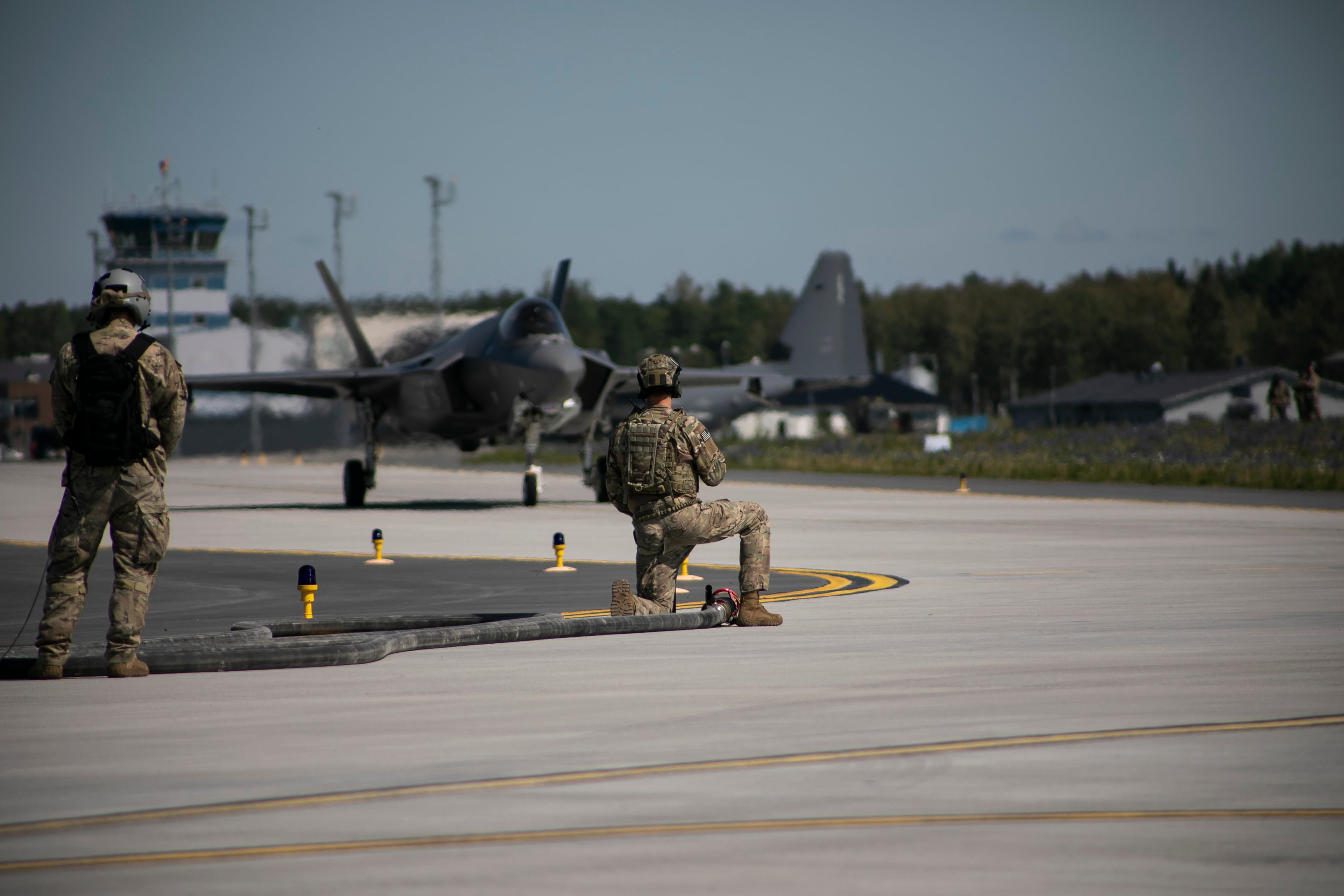WASHINGTON — The U.S. Air Force is keeping an eye on the Army’s next-generation rotorcraft program, which could fill a gap for agile airlift that might be needed in a fight against Russia and China, an Air Force general said Thursday.
With its large air bases vulnerable to attacks from a near-peer adversary, there’s no guarantee that the Air Force will be able to rely on its current processes or equipment to transfer supplies in and out of air bases. In a war with China or Russia, the U.S. Air Force would distribute its assets to bases owned by allies and partners, cutting down the threat to aircraft usually located at the service’s large installations.
But that poses a problem for rapidly transporting materiel like spare parts and maintenance equipment to more austere locations in a time of war, said Lt. Gen. Warren Berry, the Air Force’s deputy chief of staff for logistics, engineering and force protection.
RELATED

“We know we’re going to have to get after some other things that might be a different way of doing distribution and lift,” he said during a July 9 event hosted by the Mitchell Institute for Aerospace Studies. “It might be a different way of doing airfield recovery. It might be different equipment that’s lighter and leaner that allows us to set up in a more expeditious manner with less fuel.”
“Agility Prime is certainly one [option],” he said, referring to an ongoing Air Force effort to tap into the emerging commercial market for “flying cars” — basically, experimental transport aircraft that the service could use for logistics, search and rescue, or shuttling troops to remote locations.
Another option is the Army’s future vertical lift effort, or FVL, Berry said. “That’s something that we’ll certainly look at, but we know that we need to do lift in a different way.”
The Army intends to break FVL into multiple programs, which could give the Air Force multiple aircraft to pick from if it decides to buy in. The future long-range assault aircraft will replace the UH-60 Black Hawk utility helicopter and is planned to be fielded in 2030. As part of the Army’s risk-reduction effort, Bell Helicopter is developing its V-280 Valor, while a Sikorsky-Boeing team is working on its own SB-1 Defiant aircraft.
The future attack reconnaissance aircraft would fill an existing capability gap, accomplishing the reconnaissance missions that have been performed by AH-64E Apaches teamed with Shadow drones following the retirement of the OH-58D Kiowa Warrior in 2017. It’s currently on track to be fielded in 2028, with Sikorsky and Bell chosen to build prototypes.
Aside from closely watching the Army’s FVL effort, the Air Force is also engaging with the Army-led Joint Counter-Small Unmanned Aircraft Systems Office on ways to defend U.S. bases against small drones, Berry said.
“That’s going to be a demand signal on this force moving forward that we’re going to have to really think through and make sure that we have them [airmen] resourced appropriately to execute that part of the air base air defense mission as well,” he said.
In June, the office rolled out a plan for the Defense Department to consolidate its counter-UAS technologies from about 40 systems to a total of eight. The approved systems were chosen after an Army-led assessment and included fixed, mounted and dismounted solutions. An Air Force system known as Negation of Improvised Non-State Joint Aerial-Threats, or NINJA — which jams radio signals between the UAS and its operator — was among those selected.
“Our goal is to align existing and future counter-UAS technology solutions to best address operational needs while applying resources more efficiently,” said Maj. Gen. Sean Gainey, the office’s director.
Berry said that the Air Force has embedded some of its personnel within the counter-UAS office to stay synchronized with the Army’s efforts. “So far we’re happy with where it is and where it’s going,” he said.
Valerie Insinna is Defense News' air warfare reporter. She previously worked the Navy/congressional beats for Defense Daily, which followed almost three years as a staff writer for National Defense Magazine. Prior to that, she worked as an editorial assistant for the Tokyo Shimbun’s Washington bureau.







